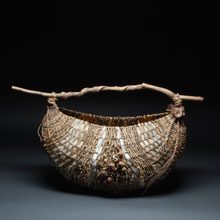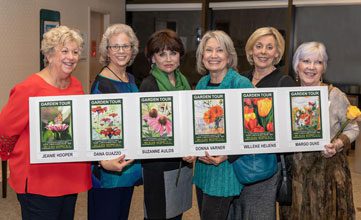Eric Horan's Tips for Photographing Wildlife
1. Don't Be in a Hurry! Slow down and try to become one with your environment. To the degree that you can do this, is the degree that the wildlife will accept you as non-threatening. The result, your photographs will improve just because you were able to get closer and witness a more natural behavior. (Tip: Make only slow and deliberate movement & use bug spray when needed so you won't be swatting at biting insects).
2. When On Foot Move Toward Your Subject in slow and intermittent movements, shooting each time you stop (this may be as close as you get). After some practice you will begin to sense just when you have pasted their comfort zone so you can stop before you've gone too far and they fly or run off. But because they might at any moment, remember to have your camera settings ready to capture that "jump shot" or "escape shot". Instead of pressuring animals to that point, I usually prefer to see how far I can enter that comfort distance that all birds & animals have. If you take your time you will find yourself amazingly close, not always but sometimes. To see just how close you can get, to me, is all the fun. (Note: Pressuring birds while they are feeding is one thing but if they are nesting quite another. We should not be the reason a bird stays off its nest. This is why I work from inside some sort of photo blinds during nesting season, (chair blinds, poncho, auto, golf carts, boats or natural habitat like up against a tree or bush in natural earth tones or camouflage) or stay far enough back as not to keep the birds from returning to their normal behavior.
3. Always Wear Camouflage or other muted earth tone colored clothing as not to draw attention to yourself. (Use of blinds is very effective in a lot of situations. I use poncho blinds (covers you and tripod), chair blinds (covers built-in captains chair), or sometimes just hang a wall of camouflage material. Some situations may call for using your vehicle or boat or yes even a golf cart as photo blind because the wildlife have become more desensitized to them than they are to you in the open on your feet. Keep an open mind and be willing to tailor your approach to any situation.
4. Use Trees and Bushes for Cover. This works especially well if you are going to sit and wait in a spot. Maybe a situation where you know before hand, that something is going to happen. (Example: You've found a trail which deer use daily on their feeding cycle. Sitting up against a tree or in a bush in the right colored cloths (camouflage works best), can get you great pictures). Keep in mind that deer and a lot of other mammals have a keen sense of smell, so you will have to stay downwind so they won't pick-up your scent.
5. Meeting Another Photographer If you come up on a photographer who is photographing and animal or bird, remember it may have taken him or her a long time to get that close and they won't appreciate you walking up and scaring the subject off, or worse, stepping in front of them with your short lens in order to get a picture. Instead figure out a way to communicate with the photographer and ask permission to join him. Approach further only after they have somehow given you the okay to do so. (It may be your coming along presents an opportunity for the first photographer to have help in containing the subject or changing their direction, so they may have been hoping someone else would come along to help them "herd" the subject.)
6. Keep Talking to a minimum, but when you have to communicate, keep it down to whispers and small gestures. (Mammals have a keen sense of smell, hearing and great vision, birds are most sensitive to your movements but also, to a lesser degree, the noise you make.)
7. Breeding & Nesting Seasons are a great time to shoot many birds because of their breeding plumage, they look their best and they are constantly busy feeding themselves and their young. Birds can't smell you so you don't have to think about wind direction, only staying concealed and quiet. Look for birds that are feeding and get you into a good location to observe. When they are busy feeding they are more tolerant of you and if you are still and quiet long enough they will see you as non-threatening and go on feeding. This can be a great photo op! (Tip: Because your odor does not matter to the birds J the wind direction is only important in terms of being able to predict which way the birds will come and go. This is particularly true of the bigger bird species, song birds to a much lesser degree. They like to take of and land, headed into the wind. If you can get yourself into a position to shoot with both the sun and wind somewhere behind you, you will get better images than being downwind, or being upwind but not having good light. This is very important in certain situations, for instance if you are working with a birds nesting, If you know the direction of the wind you can get yourself in a relative position to the nest which will yield you the kind of lighting and action that you are after.)
8. Questions/ When I'm in the field I've trained myself to ask these questions and because I need the answers instantly, they have become part of a constant mental exercise with serves well to improve the quality of the images I end up with.
How Can I Improve The Lighting? Another camera angle or position or do I need to come back another time in different light conditions?
How Can I Improve The Composition? Rule of thirds is good but can be broken sometimes with the right balance of pictures elements, so think about balancing all the elements in the frame into an interesting composition. This might be done with a different lens selection or camera position. Or it may be accomplished by waiting for your subject to move it's head one way or the other, or for another bird or something else to enter the frame (anticipation or pre-visualization).
How Else Can I Improve The Shot? It may need some action or that perfect gesture. Maybe waiting for the bird to turn it's head in order to capture the light in it's eye or being still until a deer looks at the camera. (With wildlife photography capturing the suns catch light in the eye will greatly improve your photos. When shooting in a backlit situation it's not possible unless you create one by using fill flash.)
How Can I improve The Picture For This Subject? Unless you are shooting environmental portraits and trying to show more habitat, long lenses are better for shooting most wildlife subjects simply because you are able to separate them from the background. This is a good way to make it clear to the viewer, where their eye should go when looking at your images. But just having the background out of focus may not hold their attention for long if the whole picture is not captivating. In order to get those exceptional images we need to exercise the control we have for the degree of softness there is, what the tones, colors and shapes will be. This you can do with f-stops, and camera position. Remember when using long lens it does not require big movement in camera position to make drastic changes in the look of the background. (Above is the reason why I mostly shoot in aperture priority mode, using the exposure compensation button. It is much quicker (control with fingers & thumb and never look at the camera) that manual mode for quick, on the fly, changes to depth of field, shutter speeds and exposure. Using manual mode uses value time you need for watching what's happening in the viewfinder)
Being able to anticipate the subjects' movements can also improve your photographs. If a bird is feeding and moving in one direction and you can see that it is coming into an area; maybe a background where you will be able get more interesting images you may want to stop shooting and get yourself into a better position (as not to disturb the bird you might have to retreat straight back before you move over) and be ready for him when he gets there.
9. Patience and Perseverance. Wildlife photography takes both, don't be discouraged when you don't come home with everything you wanted to get, or you missed a perfect opportunity (you blew it) during an outing (It happens to us all!). Hopefully you will learn something about about the animal behavior or your approach that will allow you to do better your next time out.
10. Knowledge is Key. Remember Knowing your subjects different behaviors, patterns of movement, feeding habits etc… will enable you to capture those" one of a kind" images you see in the birding magazines and separate you from the crowd who might settle for just quick portrait. When you are not photographing, be an observer and study animal behavior.
11. Have Fun Shooting, Remember, even if you don't get much this time, it's still nothing like going to work, even if you do it for a living!









